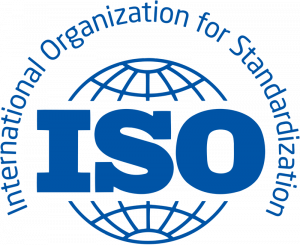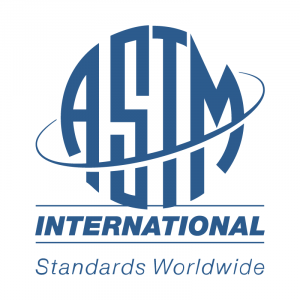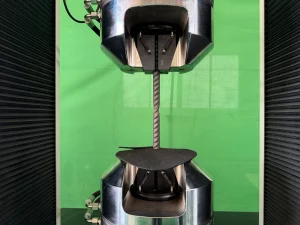Accurate force measurement is the foundation of reliable material testing. Whether testing metal, plastic, or composite samples, every result depends on the testing machine calibration. Two major standards set the global benchmark for verifying force accuracy: ISO 7500-1 and ASTM E4.
Though they share the same goal—making sure testing machines apply and measure force correctly—these standards differ in their structure, calibration approach, and usage within different industries and regions. Labs, manufacturers, and engineers who rely on consistent, verifiable testing data must understand these differences.
Lets compare ISO 7500-1 and ASTM E4 in depth, examine how each standard defines accuracy, what procedures they require, and why you should choose one over the other.
Overview of Force Calibration Standards
Force calibration standards provide a framework for evaluating whether a material testing machine is capable of producing accurate, repeatable results. They define how to verify that the force applied during tests aligns with the indicated values shown on the machine.
In practice, calibration is not just a technical step—it is a requirement for compliance, traceability, and global trust in data. Two of the most widely used standards in this field are ISO 7500-1 and ASTM E4. Each offers its own methodology, classification system, and testing approach, reflecting the environments and expectations for which they were developed.
The following sections examine each standard in detail, highlighting its structure, procedures, and role within the modern material testing environment.
ISO 7500-1:2018 — Calibration and Verification of Force-Measuring Systems in Tension/Compression Testing Machines
ISO 7500-1:2018 is an international standard that outlines the requirements for the calibration and verification of force-measuring systems in uniaxial testing machines, specifically those used for tension and compression tests. It provides assurance that these machines provide accurate and reliable force measurements.
 Scope and Applicability
Scope and Applicability
ISO 7500-1:2018 applies to static uniaxial testing machines used for tension and/or compression tests on metallic materials. It is relevant for machines that measure force on a single axis and is not intended for dynamic or high-speed testing applications.
Key Components of the Standard
-
General Inspection: Before calibration, a thorough inspection of the testing machine is required to ensure it is in proper working condition. This includes checking for wear, defects, and environmental factors that may affect performance.
-
Calibration of the Force-Measuring System: The standard specifies procedures for calibrating the force-measuring system using force-proven instruments traceable to national or international standards. Calibration must be performed over the entire operating range.
-
Verification of Performance: After calibration, the machine’s performance is verified to confirm that it meets the accuracy requirements specified for its class. This involves assessing parameters such as indication error, repeatability, and reversibility.
Accuracy Classes
ISO 7500-1:2018 defines several accuracy classes for testing machines, each with specific permissible limits on measurement errors:
-
Class 0.5: ±0.5% relative indication error
-
Class 1: ±1.0%
-
Class 2: ±2.0%
-
Class 3: ±3.0%
Calibration Procedure
The calibration process involves applying known forces to the testing machine and comparing the indicated force readings to the reference values. Key steps include:
-
Preloading the force-proofing instrument multiple times to stabilize readings.
-
Applying increasing and decreasing forces across the machine’s range.
-
Recording and analyzing machine responses to assess accuracy and repeatability.
The standard requires at least five calibration points between 20% and 100% of the machine’s capacity, with additional points recommended for lower ranges.
Environmental Conditions
Calibration should be conducted under controlled environmental conditions to minimize measurement uncertainties. The ambient temperature during calibration must be between 10°C and 35°C, with temperature stability maintained throughout the process.
Documentation and Reporting
Upon completion of calibration and verification, a detailed report must be generated, including:
-
Identification details of the testing machine and force-proven instruments used.
-
Calibration results, including measurement errors and uncertainty assessments.
-
Confirmation of compliance with the specified accuracy classes.
ASTM E4: Standard Practices for Force Calibration and Verification of Testing Machines
The second standard we will discuss is ASTM E4, which is an internationally recognized standard developed by ASTM International, detailing procedures for the calibration and verification of force-measuring systems in tension and compression testing machines. It provides assurance that these machines provide accurate and reliable force measurements. The standard applies to static and quasi-static testing machines, regardless of whether they have force indicators.
 Scope and Applicability
Scope and Applicability
ASTM E4 applies to the calibration and verification of force-measuring systems associated with testing machines used in tension, compression, or both. It is not intended to be a complete purchase specification for testing machines, but focuses on verifying the accuracy of force measurements.
Calibration and Verification Methods
ASTM E4 outlines three primary methods of calibrating and verifying testing machines:
-
Use of Standard Weights: Applying known weights to the testing machine to verify its force measurement accuracy.
-
Use of Equal-Arm Balances and Standard Weights: The use of balances with standard weights to assess machine force measurements.
-
Use of Elastic Force Measurement Standards: Implement elastic devices that deform under load to calibrate machine force measurements.
Each method requires specific measurement uncertainty and must display metrological traceability to the International System of Units (SI) through a National Metrology Institute (NMI).
Force-Measuring Systems and Indicators
The standard applies to the calibration and verification of the force-measuring systems associated with the testing machine, including force indicators such as scales, dials, marked or unmarked recorder charts, digital displays, etc. In all cases, the buyer, owner, or user must designate the force-measuring system(s) to be verified and included in the certificate and report of calibration and verification.
Units of Measurement
ASTM E4 allows the use of either SI units or inch-pound units, but values from the two systems should not be combined. Other non-SI force units, such as kilogram-force (kgf), may also be used with this standard, particularly in hardness testing machines.
Measurement Uncertainty and Accuracy
The standard specifies that requirements limit the major components of measurement uncertainty when calibrating testing machines. ASTM E4 does not require the allowable force measurement error to be reduced by the amount of measurement uncertainty encountered during calibration. As a result, a testing machine verified using these practices may produce a deviation from the true force broader than ±1.0% when the force measurement error is combined with measurement uncertainty.
Documentation and Reporting
Upon completion of calibration and verification, a detailed report must be generated, including:
-
Identification details of the testing machine and the force-measuring instruments used.
-
Calibration results, including measurement errors and uncertainty assessments.
-
Confirmation of compliance with the specified accuracy requirements.
Comparative Analysis of ISO 7500-1 and ASTM E4
While both standards aim to guarantee testing machines’ accuracy and reliability, they differ in their approaches, requirements, and applications. The following are comparisons of both standards:
Accuracy Classification
-
ISO 7500-1: This standard defines specific accuracy classes—Class 0.5, 1, 2, and 3—each with permissible relative errors. For instance, Class 1 allows a maximum relative error of ±1.0%. These classes help users select machines appropriate for their testing requirements and assure consistency in measurement accuracy.
-
ASTM E4: Instead of defining classes, ASTM E4 specifies that the testing machine must be accurate to within ±1% of the applied force over the verified range. This approach provides a general accuracy requirement without categorizing machines into specific classes.
 Calibration Procedures
Calibration Procedures
-
ISO 7500-1: Calibration involves applying increasing and decreasing forces across the machine’s range. This requires at least five calibration points between 20% and 100% of the machine’s capacity. The standard also mandates the determination of parameters such as indication error, repeatability, and reversibility.
-
ASTM E4: The standard outlines calibration methods using standard weights, equal-arm balances with standard weights, or elastic force measurement standards. It emphasizes metrological traceability to the International System of Units (SI) through the National Metrology Institute (NMI).
Environmental Considerations
-
ISO 7500-1: Calibrations should be conducted under controlled environmental conditions, with ambient temperatures between 10°C and 35°C. The temperature must remain stable during calibration to minimize measurement uncertainties.
-
ASTM E4: While the standard does not explicitly define environmental conditions, it implies the necessity for stable conditions during calibration to ensure accurate measurements.
Traceability and Uncertainty
-
ISO 7500-1: Focuses on traceability to SI units and requires a detailed assessment of measurement uncertainty. The force-proofing instruments used must comply with ISO 376 requirements, and the class of the instrument should be equal to or better than the class for which the testing machine is to be calibrated.
-
ASTM E4: Also emphasizes SI traceability but allows for more combined deviations when measurement uncertainty is considered. The standard specifies that force measurement error, combined with measurement uncertainty, may result in a deviation from the true force of more than ±1.0%.
Application and Compliance
Where ISO 7500-1 Is Required and Why It Dominates International Calibration
ISO 7500-1 is the preferred calibration standard across North America as well as many European and Asian countries and is often mandated by national accreditation bodies as part of ISO/IEC 17025 requirements. A laboratory performing tensile or compression testing on metallic materials is expected to conform its force verification procedures to ISO 7500-1 in order to maintain traceability and global compliance.
For example, a testing lab in Germany conducting fatigue analysis on aircraft-grade aluminum must demonstrate machine calibration according to ISO 7500-1 Class 1.0 or better to satisfy Luftfahrt-Bundesamt (German Civil Aviation Authority) requirements. Similarly, automotive manufacturers in Japan and South Korea often specify ISO 7500-1 compliance in technical procurement documents when sourcing testing systems for validating suspension components or crash simulation parts.
The standard’s classification system (Class 0.5, 1.0, etc.) allows clients and auditors to immediately assess the precision level of equipment used in testing, particularly in cross-border contracts where it is important to harmonize testing standards.
Why ASTM E4 Remains the Go-To Standard for North American Testing Labs
ASTM E4 remains the primary standard in the United States and is extensively used by laboratories accredited under the A2LA, NVLAP, and NADCAP programs. It is particularly prevalent in sectors such as defense manufacturing, construction materials, and plastics testing, where it is integrated into ASTM-based compliance ecosystems.
For instance, a U.S.-based construction materials lab testing the compressive strength of reinforced concrete cylinders using a hydraulic press will verify the load frame using ASTM E4-calibrated equipment. Likewise, a defense contractor performing tensile testing on polymer-based armor panels for ballistic protection will often follow ASTM E4 for load frame calibration as required by military procurement protocols referencing ASTM D638 or D3039 standards.
ASTM E4 is also frequently cited in procurement specifications for universal testing machines (UTMs) used by OEMs in North America, and serves as a reference point during factory acceptance testing (FAT) and annual calibration audits.
How NextGen Supports ISO and ASTM Force Calibration Compliance
 In laboratories and manufacturing facilities that rely on accurate material testing, compliance with international calibration standards is not an option, it is a necessity. At NextGen Material Testing, we provide not only high-precision equipment but also the tools and services necessary to help you achieve full compliance with global force verification requirements, including ISO 7500-1 and ASTM E4.
In laboratories and manufacturing facilities that rely on accurate material testing, compliance with international calibration standards is not an option, it is a necessity. At NextGen Material Testing, we provide not only high-precision equipment but also the tools and services necessary to help you achieve full compliance with global force verification requirements, including ISO 7500-1 and ASTM E4.
Certification Services for ISO 7500-1 and ASTM E4
NextGen facilitates certification services for both our own equipment and third-party systems. Whether you require ISO 7500-1 (Class 0.5 or 1) compliance or ASTM E4 (Class A) verification, our team works with trusted ISO and ASTM-accredited partners to deliver calibration processes that meet the most stringent international criteria.
These services are particularly vital for organizations operating in regulated environments such as metallurgical labs, aerospace component testing, automotive material development, and industrial manufacturing. With our certification support, clients can ensure that their universal testing machines, load cells, and force measurement instruments are accurately verified and traceable to SI units through national metrology institutes.
Certification-Ready Equipment Across Multiple Standards
Beyond ISO 7500-1 and ASTM E4, NextGen supports the calibration and certification of a comprehensive range of testing systems and relevant standards, including:
-
ASTM E1012 – Alignment verification
-
ASTM E83 / ISO 9513 – Extensometer calibration
-
ASTM E18 / E10 / A956 – Hardness testing (Rockwell, Brinell, Leeb)
-
ASTM E23 / ISO 148-2 – Charpy impact testing
-
ANSI/NCSL Z540-1-1994 – Measurement accuracy and traceability compliance
We offer direct and indirect verification, displacement measurement calibration, and force system certification tailored to each client’s application and sector-specific standards.
Support for ISO/IEC 17025:2017 Accreditation
For laboratories pursuing or maintaining ISO/IEC 17025:2017 certification, NextGen provides calibration solutions aligned with competence requirements for testing and calibration activities. Our network of certified partners confirms that every force verification or adjustment meets ISO 17025 procedural and documentation demands.
Choosing the Right Calibration Standard—and Getting It Right
Understanding the differences between ISO 7500-1 and ASTM E4 is more than a matter of terminology—it is a practical requirement for assuring material testing results accuracy, repeatability, and credibility. These two standards serve the same goal: to verify that the force applied and measured during a test is correct. But how they achieve that goal varies based on the methodology, classification systems, regional use, and calibration procedures.
ISO 7500-1 offers a highly structured and internationally harmonized approach, especially favored by laboratories that require traceability and adherence to ISO/IEC 17025. In contrast, ASTM E4 is more broadly adopted across North America and provides a robust but less class-dependent force verification model. Depending on the region, industry, and accreditation requirements of your facility, one may be more appropriate than the other, or both may be necessary to satisfy global partnerships and quality programs.
At NextGen Material Testing, we help simplify this decision. Whether you need to meet ISO 7500-1 Class 0.5 or comply with ASTM E4 Class A, our high-precision equipment is certification-ready. Beyond manufacturing, we provide full calibration and certification support for both our machines and third-party equipment, in collaboration with ISO-accredited partners. We also assist clients seeking compliance with ISO/IEC 17025:2017, NADCAP, ANSI/NCSL Z540-1-1994, and related industry-specific frameworks.
If your organization is looking to upgrade its equipment, achieve accreditation, or simply verify compliance with ISO or ASTM calibration standards, we are ready to support you. You can request an online quote or contact us directly to speak with a specialist.
Let us help you achieve confidence in every test result—starting with precision at the source.